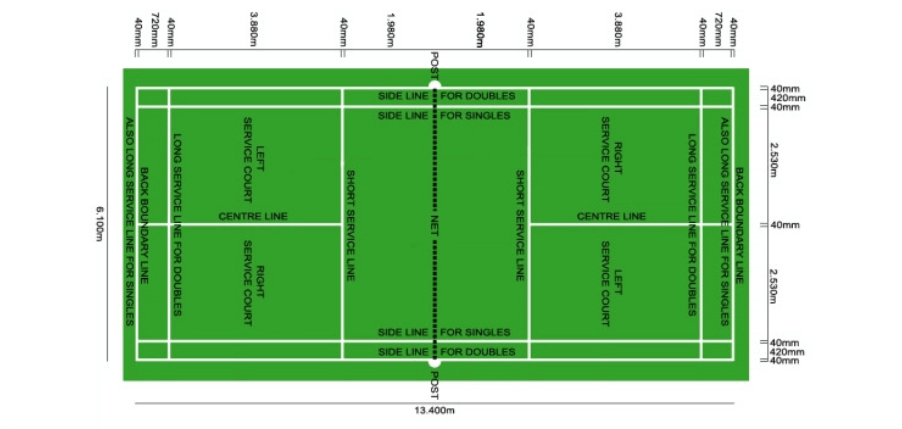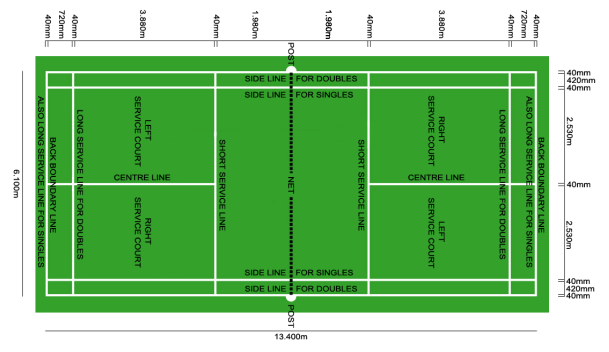Badminton Rules : The Basics

Badminton Rules
Badminton is one of the most popular sports worlds over. But few people are aware of all the rules that encompass this great game. Padukone Sports Management aims to bring you all of it in this fun read.

Mr. Uday Sane, BAC Referee & Ex-BWF Certified Technical Official.
What makes badminton unique is its straightforward set of laws and rules which make it compatible with all age groups. Read on.
What makes badminton unique is its straightforward set of laws and rules which make it compatible with all age groups and can be played in any season. By the end of this blog, you will be equipped to play the world’s fastest racquet sport! While the game has evolved considerably since its origins in the 16th century, (read all about Badminton History here) rules and regulations form the foundation for the game anywhere in the world today.
The game in its current format is more popular, faster and more powerful along with being television-friendly.
Players
Badminton is played in multiple formats – in singles, in teams as doubles and mixed doubles.
We have Players, What next?
Besides enthusiastic players, the game has a requirement of a court, a net, racquets and shuttlecocks.
The Badminton Court – Standard measurements for the court are a 44 feet length and 20 feet width. The court is divided equally into two for the competing sides. Each side is further divided into two equal halves, each for one player in a doubles game.
Many lines make up the court:
- Center Line– A line drawn in the middle extending from the back to near the net
- Service Line – line at the front near the net, forming a T with the center line
- Inner Boundary
- The singles and doubles game have different court requirements
- Inner boundary lines parallel to the net are the boundary for doubles service
- Inner boundary lines perpendicular to the net are for singles service
- The Outer Boundary
A simple way to understand the lines– the doubles court for service is wider and shorter than the singles court for service
Net – Five feet one inch in height with corners attached to poles. When strung on a pole, the net stretches to two feet six inches in depth between the bottom and top. The net is supported by cable, cord and a rope. It is made of synthetic/natural vinyl and nylon cords. The mesh of the net is 15mm x 20mm.
Shuttle – Made of 16 goose feathers (each 62 to 70 mm long) fixed in a uniform pattern on a hemispherical cork base of diameter 25 to 28 mm. It weighs between 4.75 and 5.50 grams.
Racquet – A stringed bat with a circular head to strike the shuttlecock. It is lightweight, weighing between 70-95 grams made most commonly of carbon fiber. The strings are taut, thin and are strung across the circular/oval head of the racquet. The bat has a grip to add volume to the handle and provide a comfortable holding area.

What do we play for?
The basic objective is for the player to hit the shuttlecock with a racquet over a net and land it in designated areas on the opponent’s side of the court.
The goal is to win by scoring points. The match consists of players striking the shuttlecock onto the other side of the court with specific rules of awarding points to either side. According to the laws of badminton, a player has to score 21 points to win the game. A point is scored when the shuttle lands on the opponent’s court passing above the net.
The game is played in three matches, each for 21 points. Player with maximum wins is declared the final winner. A 2-minute interval is allowed between each game, other than which it is played continuously. A 60-second break is allowed when the 11th point is scored in a game. Players change sides after every game, and after the 11th point is scored in the last game.
The Start
An umpire’s coin-toss is the opening, which allows the winner to choose whether to serve or to receive first and also which side of court to play. Once the court is chosen and the serve decided, the game begins! The players’ position is such that they either serve or receive within diagonally opposite service courts without touching the boundary lines.
The Serve
The basic and most important move is the serve. It is an underarm movement of the racquet striking the cork base of the shuttle, in such a manner that the shuttle travels over the net and lands diagonally opposite in the opponent’s court in the service box.
Players are stationary until the shuttlecock gets moving! Once up in air, the shuttle is deemed to be ‘in play’, and players are free to move around the court to strike.
The Rally – How are Points Scored?
The game progresses as players win or lose points.
To win a point – the shuttlecock must land in the opponent’s court.
The initial server starts the game at 0-0 score. While playing badminton, rules state that when the server scores an even point, the player serves from the right side of the service court. If the server’s score is odd, the server shifts to the left service court and makes his next serve.
When the service side player wins a rally, the server wins a point and moves to the alternate service court to make his next serve. In case the receiver side player wins a rally, the receiver scores a point. He then serves next. The service always starts from the corresponding side– for an odd score-left and an even score-right.
The rally-point system ensures every rally brings an outcome, resulting in a change in score.
The Scoring
- For every service –a point is scored
- To add a point, the player must win a rally
- In case of tie at 20 points, the side achieving a 2-point lead first wins
- At 29 all, the side that scores the 30th point wins
- The winning side in a game serves first in the subsequent game
Role of Umpire & Referee
- The Referee takes overall charge of the tournament which consists of multiple matches. The Umpire is in-charge of the match, court and immediate surroundings and reports to the Referee
- The Referee has powers to disqualify the offending side from a match
- A Service Judge calls service faults made by server
- A Line Judge calls whether the shuttle landed ‘in’ or ‘out’ of the line assigned to him
- On point of fact, the respective officials’ decision is deemed final
- The Umpire refers all unsatisfied appeals on Point of Law to the Referee
- The Umpire is the sole judge of any delay. He administers any breach of law for delay, leaving court without permission, offensive behavior/misconduct
- The Umpire also takes action in terms of issuing a Red/Yellow card to warn the offending side/player of fault
The game in its current format is more popular, faster and more powerful along with being television-friendly.
